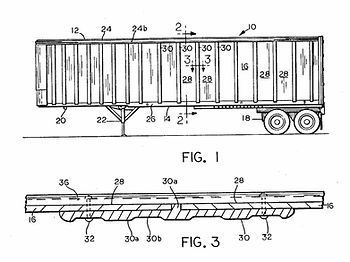Patent Infringement Analysis
Veritech’s team of Professional Engineers have worked on numerous cases involving patent evaluation and mechanical design review. We have extensive knowledge and experience in the areas of product development, engineering design, and manufacturing methods which gives us valuable insight into potential design and manufacturing pitfalls. Whether you need an independent evaluation of a single part or a complex mechanical system, Veritech’s certified forensic engineers have the experience, knowledge, and training to assess a current design, identify potential weaknesses and propose design modifications and improvements as necessary.
Forensic Engineering Services
Patent Evaluation and Prior Art Analysis by Forensic Engineers
At Veritech Consulting Engineering, our engineers provide expert patent evaluation, intellectual property analysis, and patent infringement support. We understand that the language and claims of a patent are critical to determining its validity and enforceability.
Accurately interpreting a patent requires technical expertise, careful scrutiny of the specifications, and detailed analysis of the invention’s claims. Patents are designed to legally protect novel designs, functionalities, and innovations from unauthorized duplication, and ensuring compliance requires competent evaluation.

Forensic Patent Evaluation and Intellectual Property Analysis

Our forensic engineers assist in evaluating patent infringement claims, trade secret disputes, and intellectual property issues. By analyzing patent claims, specifications, and prosecution history, we help attorneys and companies understand whether an alleged infringing product truly violates the patented invention or if prior art may affect patent validity.
Investigating Evidence of Prior Art
A critical step in patent infringement analysis is identifying prior art. Prior art includes any evidence that an invention was already known, used, or published before the patent’s effective filing date. Establishing prior art helps determine whether a patent is novel, non-obvious, and enforceable, and whether an accused product or process infringes the patent.
Veritech engineers follow a structured procedure for prior art investigation:
1. Analyze the Patent at Issue
The first step is a detailed review of the patent to fully understand the claims and scope. This includes:
-
Breaking down independent and dependent claims into individual elements or limitations.
-
Reviewing the specifications and drawings to understand how the inventor describes and enables the invention.
2. Develop a Claim Chart
Each claim element is mapped into a claim chart, creating a structured framework for comparing the claimed invention against potential prior art. This helps identify which features must appear in a single reference (for anticipation) or a combination of references (for obviousness).
3. Define the Effective Filing Date and Relevant Prior Art Period
Only disclosures prior to the patent’s effective filing date can qualify as prior art. This involves verifying the earliest priority or provisional application date.
4. Conduct a Comprehensive Prior Art Search
A thorough prior art search includes both patent and non-patent sources:
-
Patent databases: USPTO, EPO, WIPO, and other international patent offices.
-
Non-patent literature (NPL): technical papers, conference proceedings, manuals, standards, textbooks, product brochures, and website archives.
-
Physical products or documented public use predating the filing date.
-
Industry databases, commercial product releases, datasheets, and news announcements.
Search strategies combine keywords, classification codes, inventors’ names, assignees, and claim terminology to identify all relevant disclosures.
5. Screen and Select Candidate References
Search results are reviewed to identify the most relevant prior art:
-
Reading titles, abstracts, and figures to assess applicability.
-
Selecting references that disclose all or most claim elements.
-
Excluding references that are too recent or unrelated in subject matter.
6. Conduct Element-by-Element Comparison
Each selected reference is compared to the claim chart:
-
Citing specific passages, figures, or language from prior art.
-
Showing side-by-side comparisons of claim elements versus prior art disclosures.
7. Document and Preserve Evidence
All identified prior art is documented:
-
Saving full copies with publication dates.
-
Creating annotated claim charts linking prior art to claim elements.
-
Preparing written analyses to support litigation.
Why Choose Veritech for Patent Evaluation
With expertise in mechanical, electrical, and industrial engineering, Veritech engineers provide rigorous forensic patent analysis, helping clients:
-
Evaluate patent validity and infringement risk
-
Identify evidence of prior art
-
Support intellectual property litigation
-
Provide technically defensible reports and expert testimony
By combining engineering precision, investigative rigor, and legal insight, Veritech ensures patent evaluations are thorough and accurate.
